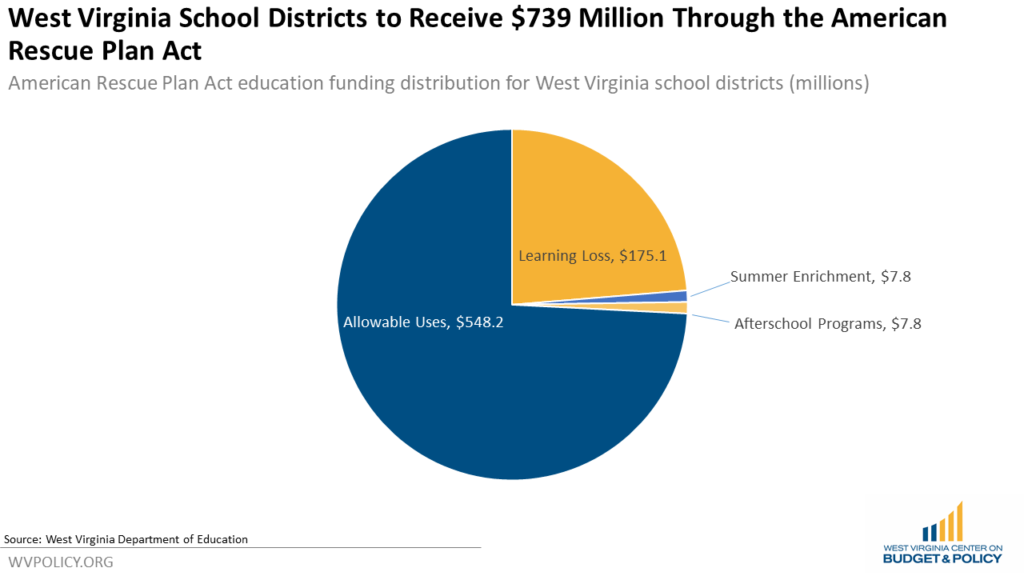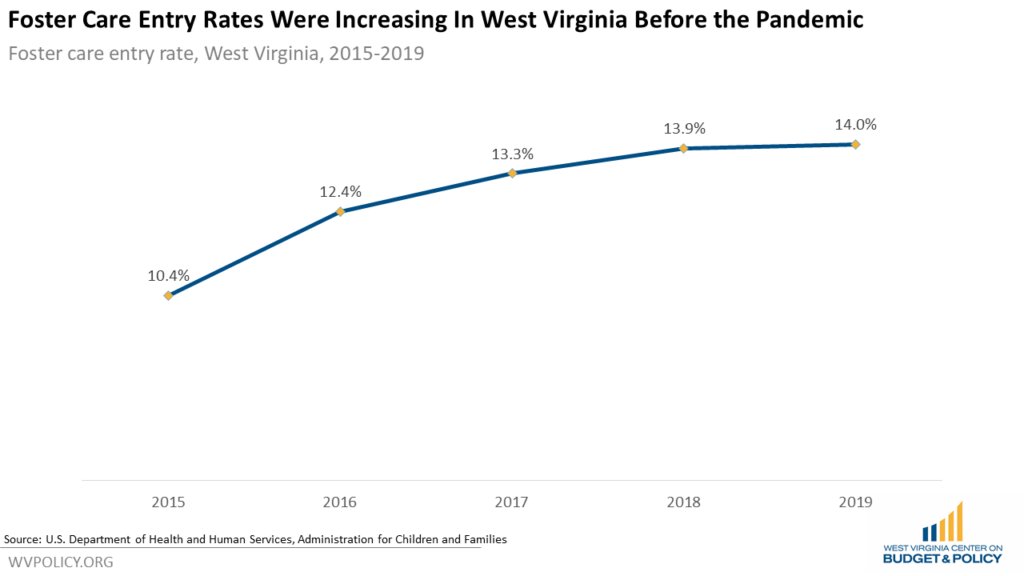This blog post was written by the WVCBP’s summer research associate, Tamicah Owens.
The closing of schools during the COVID-19 pandemic, while necessary, created a myriad of issues for learners and parents. Teachers and schools in some areas were able to quickly transition to virtual schooling for students. However, some student populations suffered higher levels of academic losses than others. These gaps further highlight longstanding issues of inequity in public schooling.
The American Rescue Plan Act of 2021 (ARPA) provides states with $122 billion to support the nation’s schools in their endeavor to reopen safely while also addressing the academic, emotional, social, and mental health needs of students in relation to losses and issues stemming from the pandemic. The ARPA K-12 guidance allows school districts to use federal funds to ensure that schools are provided with resources to prioritize student safety, in addition to addressing the academic losses and social and emotional impacts of the pandemic.
This funding provides a once-in-a-lifetime opportunity to address some of the longstanding inequities in public education that have negatively impacted multiple populations in West Virginia, including Black children, Hispanic children, children in foster care, and children with disabilities. Students in foster care may fall into multiple categories of vulnerable populations, so it is important that the intersectionality of students’ needs be examined when deciding how to best use the ARPA funds.
The American Rescue Plan Act will result in the West Virginia Department of Education receiving $761,417,928, with county Boards of Education receiving $739,042,792.76. Of the funding that counties receive, it is required that they spend a minimum of $175,125,984.31 on addressing learning loss; a minimum of $7,847,950.22 on summer enrichment; and a minimum of $7,847,950.22 on afterschool programs. The remaining amount, $548,220,908.02, is available for counties to “allocate for allowable uses.” This money can be spent through September 30, 2023.

While counties consider how to address the broad losses caused by the interruption of in-person learning, there needs to be a concerted effort to address the unique needs of students who are routinely disenfranchised in public schooling. As mentioned above, students in foster care may fall into multiple categories of vulnerable populations, and their unique needs should be considered in creating a plan. Input from foster parents is crucial when determining the unique needs of these students. Foster parents are called on to fill many roles and duties for the children in their care; accordingly, school districts should specifically seek input from foster parents by sending direct messages to them.
The foster care entry rate in West Virginia had increased in the years leading up to the pandemic, and as of June 2021, West Virginia had 6,939 youth in the foster care system. And even prior to COVID-19, students in foster care may have experienced gaps in their educational experiences due to a variety of factors, including changes in school and/or foster care placements. The unique needs of students in foster care are varied and include the need for expanded academic help outside of school hours. In addition, students in foster care are more likely to require special education services that may have been interrupted or altered due to limitations of virtual learning.

The long-term effects of low school performance on students in foster care, including higher levels of unemployment and underemployment once they age out of the foster care system, are alarming. For this reason, it is imperative that the ARPA funds address the specific needs of students who are in foster care and the academic losses they may have incurred during the pandemic.
COVID-19 added yet another layer of uncertainty and instability into the already relatively tumultuous lives of students living in foster care, and it will take innovative approaches to help them recover and learn. It is important that ideas that center around parental involvement are altered as necessary to account for students who may be in temporary foster care placements that do not allow for normal levels of parental involvement.
As ARPA funds are being dispersed to address academic loss and longstanding inequities in education, students in foster care should be given close consideration as local districts create their plans for ARPA education fund spending. This population of students may not have the same level of parental advocacy available to them as other students, so it is imperative that their needs are being examined and included as decisions are being made.
Students in foster care and their caregivers need additional support outside of school. This could include access to additional learning resources (e.g., books, subscription learning websites, and/or tutoring). They could also benefit from receiving direct attention from school social workers and counselors to help decide the specific needs of individual students. ARPA funding could be used to pay for these additional social workers and counselors to navigate specific home concerns and to provide direct support for fostering parents. It would also be valuable to have educators trained on the impacts of trauma on students’ academic performance. For students in foster care who will be graduating from high school, school-based skills for navigating the next stage of their lives would be useful.
Public input is an essential component for making sure that the needs of students and families are being considered as counties create their spending plans for the ARPA education funding. It is important to keep in mind that there are varying experiences amongst students in foster care, and community input is one way to ensure that there are various methods and strategies that will be used to address students’ academic needs in the coming years.
ARPA guidelines require that school districts solicit public input on how to best serve the needs of their students. This input is crucial in determining what parents and teachers need to help students recover from the disruption of in-person classroom learning. It is imperative that parents and communities are looking towards their local school boards to provide suggestions on how to address student needs with the available funding.
At this time, county Boards of Education across the state are publishing their initial plans for this funding and soliciting public comments. If you are a parent or a teacher, please provide this important input. Information should be available on county school systems’ websites with opportunities for the public to provide feedback. You can also call your county Board of Education.